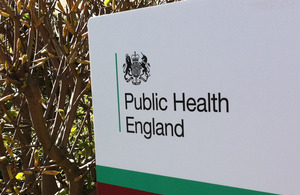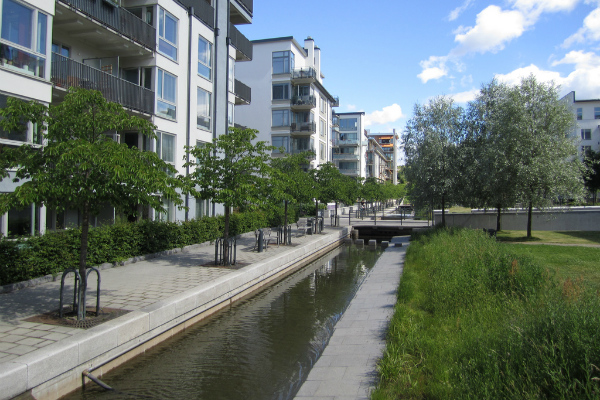The trend for urban populations to be healthier than their rural counterparts is known as the ‘urban health advantage’ and is not consistent around the world. But no matter where you live, there are health inequalities within cities which are determined by social inequalities. By understanding the challenges that are unique to individual neighbourhoods and cities, we can begin to develop solutions that make the urban health advantage a reality for everyone in every city.
There are strong links between spatial planning decisions and health outcomes. An example of the value of collaboration between planners and health professionals is the rising epidemic of obesity. NHS England Chief Executive, Simon Stevens, recently said that “obesity is the new smoking” based on its impact on health and cost to the NHS. Planning can help create urban environments that promote active lifestyles and access to healthy foods. Joint-working between health and planning can help some of the biggest health challenges facing UK cities. The need for rapid growth of new housing and associated facilities in the UK offers an opportunity to improve local outcomes through the delivery of high quality urban developments.
New opportunities for increased collaboration
The Health and Social Care Act 2012 moved a significant portion of public health responsibilities from the NHS into local authorities. Public health practitioners are now working within the same management structure and, in some cases, the same buildings with planners. This proximity creates an environment where integration is much easier.
The National Planning Policy Framework, Localism Act and Health and Social Care Act all contribute to increasing opportunities or requirements for joint-working between public health and planning. Planners are increasingly involved in the preparation of joint strategic needs assessments and joint health and wellbeing strategies with health and wellbeing boards. Public health professionals and the clinical commissioning groups should be involved in spatial plan preparation and development management.
From our partners:
The challenge of integrating planning and health
Although the roots of planning in the UK are in public health, there are now some challenges in fully re-integrating these professions.
Weak evidence
Both planning and health practitioners are familiar with the importance of evidence-based policies. Yet much of the epidemiological research looking at the relationship between the built environment and health outcomes fails to find causality. Uncertainty makes it difficult to build a strong case for incorporating specific design measures into policy or new developments. In addition, the scale of data about health issues is usually only available across a whole local authority. Data showing the spatial variation within an area would support policies that require specific evidence-based design measures in targeted neighbourhoods.
Complexity
The WHO Healthy Cities movement has provided a focus on the evidence and local initiatives that have been used to improve urban health outcomes through local government activities for the last 25 years. Analysis of the activities of member cities has recognised the complexity of planning healthy cities and the difficulty of proving causality between health-focused local government policies and health outcomes as a result. A systems approach is required to manage the complexity of improving the wider determinants of health. There is a lack of knowledge amongst planning and public health practitioners on how to implement such an approach.
Economics
Austerity measures have resulted in local authorities pairing down services to fulfil the most essential statutory functions. Some have viewed the ring-fenced budget given to public health as an opportunity to fund local projects on health and aspects of the built environment. However, the priorities of public health are focused on other areas such as smoking cessation, alcohol and drug misuse and sexually transmitted infections. There is very little leftover for the wider determinants associated with the built environment. Furthermore, a strong case needs to be developed regarding the potential savings and gains of specific built environment initiatives for health.
Location
In 2-tier authorities, the public health team sit in the county councils, whereas planners are at the district council level. This creates a barrier in terms of location but also means that 1 public health team in a county council would be asked to contribute to multiple planning services in the districts.
Language and culture
There is a culture and language barriers between professionals working on planning and health. Each specialism has its own jargon and method of working, making it difficult for individuals to understand how they can work together meaningfully.
Potential solutions
There are examples of cities that are already bringing together planning and health in novel ways to promote health outcomes through the built environment. The recent special edition of the Town and Country Planning journal on ‘Reuniting health with planning’ provides good practice examples in Belfast, Bristol, Liverpool, Stockport, Medway, and Knowsley as a starting point.
Looking forward, there are a number of activities that will improve joint-working.
Better evidence
In a world where data is increasingly available about all aspects of our lives we should be able to identify innovative ways to study the impact of the built environment on our health. New methods of research, longitudinal studies and further work on the cost-effectiveness of particular spatial decisions and the impact on health are needed to strengthen the relationship between planning and health. Data about health issues needs to be disaggregated from local authority or city-scale into smaller spatial scales to inform policy development and decision making (Public Health England’s new Local Health mapping tool makes a start at this).
New policy approaches
There are multiple suggestions for how to approach integrating health and planning from a policy perspective. ‘The Marmot Review: Implications for spatial planning‘ emphasises the link between poor health and social inequality. Their recommendations include prioritising policies that would improve health inequalities and climate change mitigation. They also promote increased community participation and joint-working on the social determinants of health. From a major interdisciplinary research programme, Rydin et al suggest policy experimentation and diversity of interventions followed by evaluation involving the community and policy debate.
Health impact assessment and other tools
There are tools that can help planners engage with health. Health impact assessments are probably the most widely known and can be used on policies and specific development proposals. Methods that allow public health and planning to work together using a mutually understood approach can support efficiency (important when services are constrained) and help overcome some of the barriers related to language and culture.
Training
Planning and public health training courses and professional development need to introduce the importance of joint-working, share good practice and provide evidence and tools to support the integration of health into planning.
There is clear evidence that planning decisions can help create urban areas that promote health. Access to green space, high quality housing, safe and active transport and clean air are a few examples where there is strong evidence from research. More research is needed to increase the evidence base that will support planners in ensuring improved health is an outcome of spatial planning policies and decisions. The BRE Trust has funded a 3-year thematic research programme on Future Cities. Several of the research projects are about improving our understanding of the relationship between health and the built environment. The BRE researchers are working with Public Health England and the WHO Healthy Cities Network to undertake the research and develop evidence and tools to inform policy. As Rydin et al point out, the urban health advantage has to be actively pursued and maintained. It will not happen in every city and for every resident without active management.
This post originally appeared in Future Of Cities UK.
















